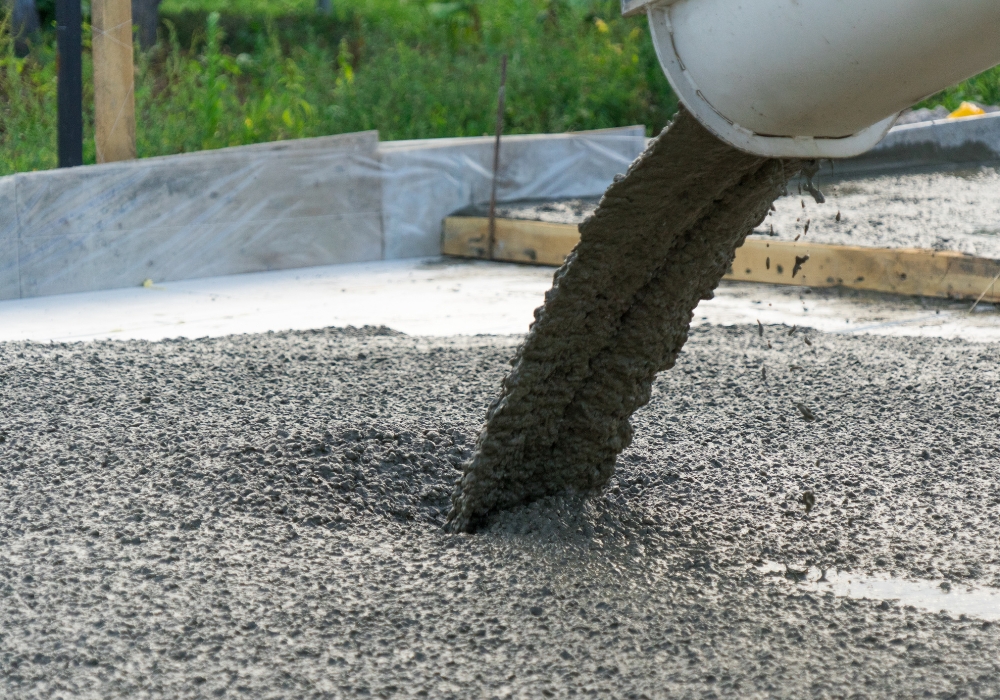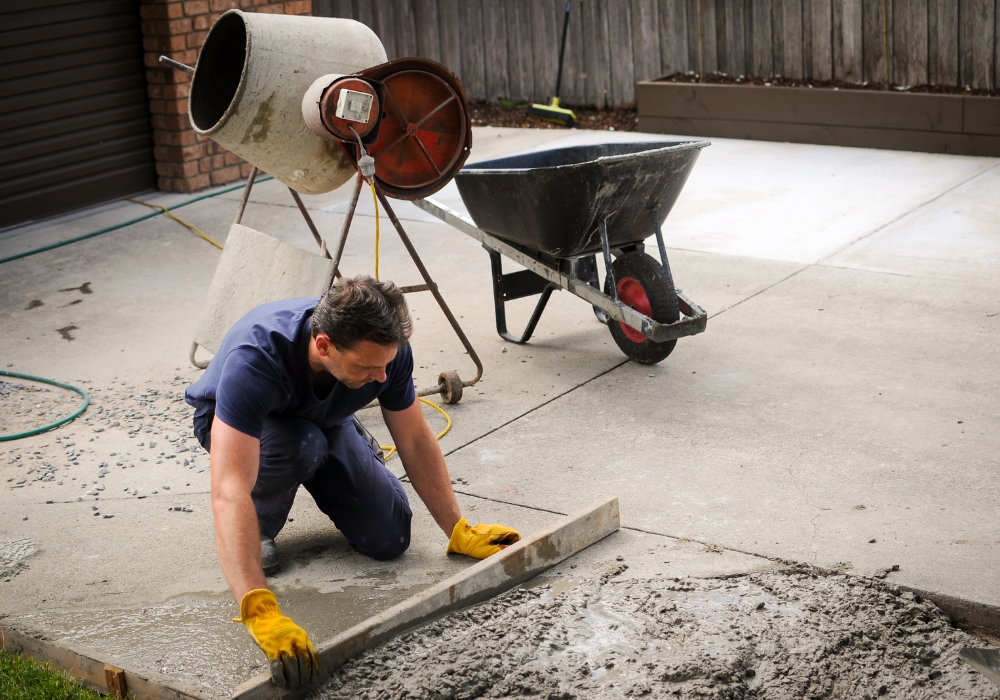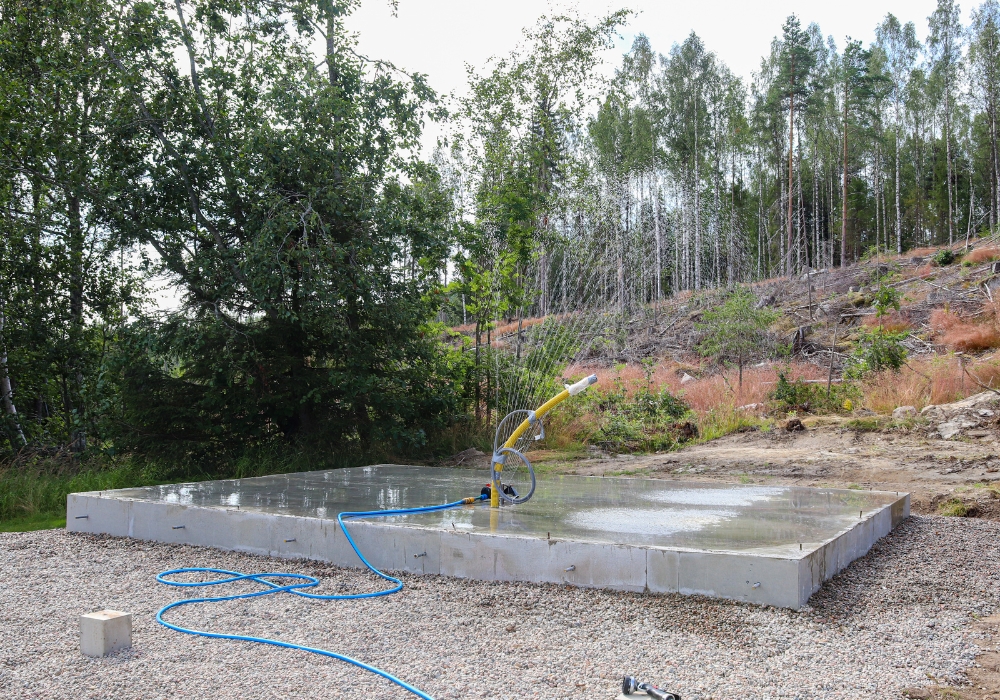
Many businesses find themselves knee-deep in the complexities of concrete construction. We get it – having been through the wringer ourselves, we know all too well that nailing your formwork is crucial for success.
After immersing ourselves in thorough research, this article aims to walk you through the importance and best practices of formwork in concrete building projects. It’s a bit of a journey, but we’re here to shine a light on how it can bring your designs from just ideas to standing structures right before your eyes.
Understanding Formwork
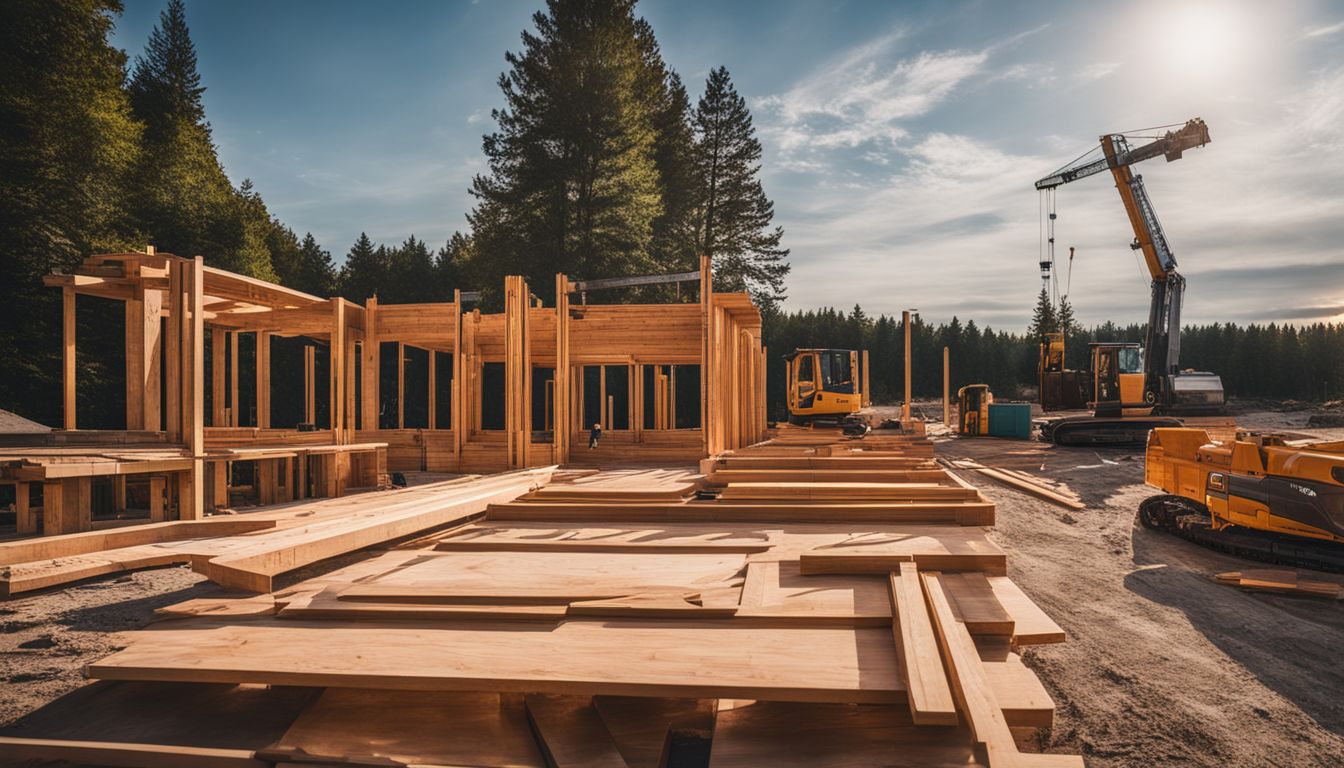
Understanding formwork is essential for any concrete construction project. It plays a critical role in shaping the concrete and providing support during its setting process. Different types of formwork, such as steel, wooden, plastic, and modular systems, offer unique solutions for varying construction requirements.
Definition of Formwork
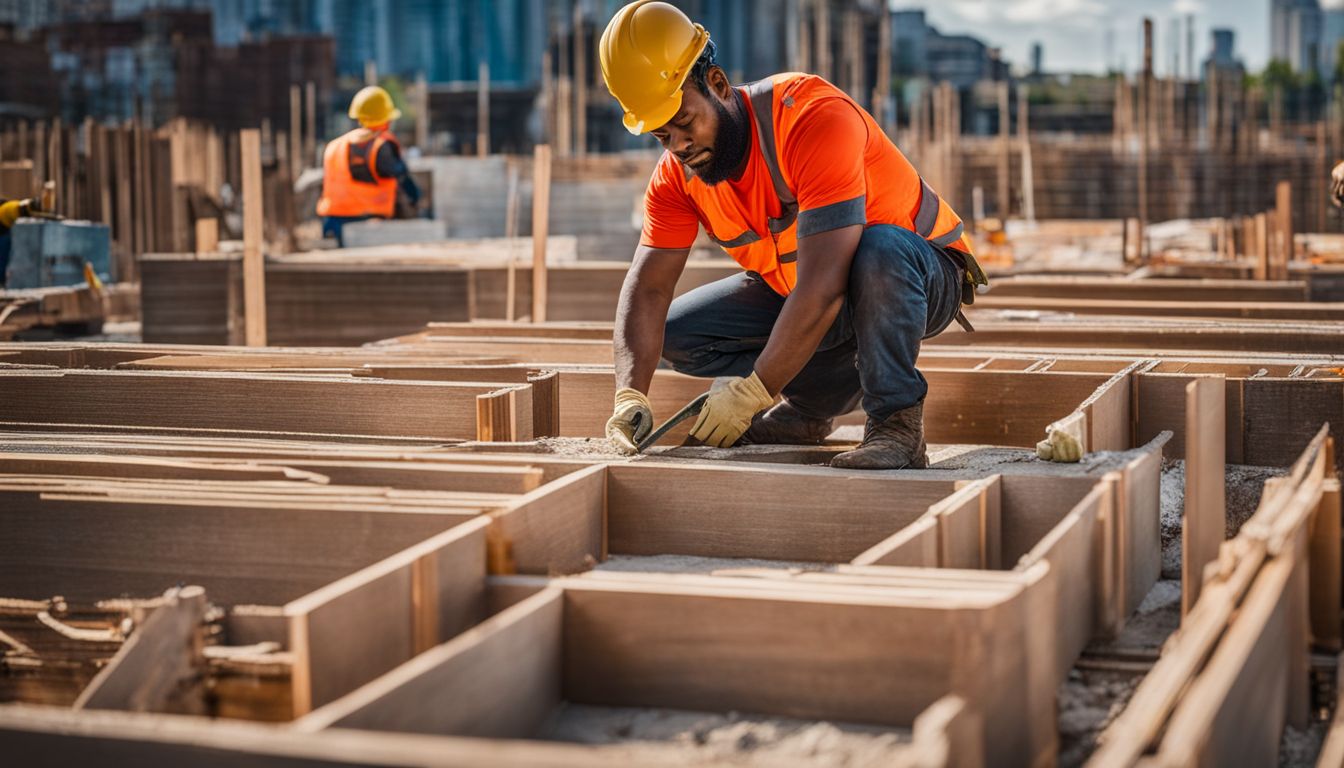
Formwork is the temporary structure or mould used in concrete construction to shape and support wet concrete until it hardens. We use it to accurately control the shape and dimensions, ensuring that each element meets design specifications.
This critical component of construction allows us to create various structural elements, from foundations to walls and slabs, providing the necessary stability and precision.
Next, we explore the dual function of formwork in concrete construction, balancing its role as both a mould for shaping concrete and as a support structure during the curing process.
The Dual Function of Formwork in Concrete Construction
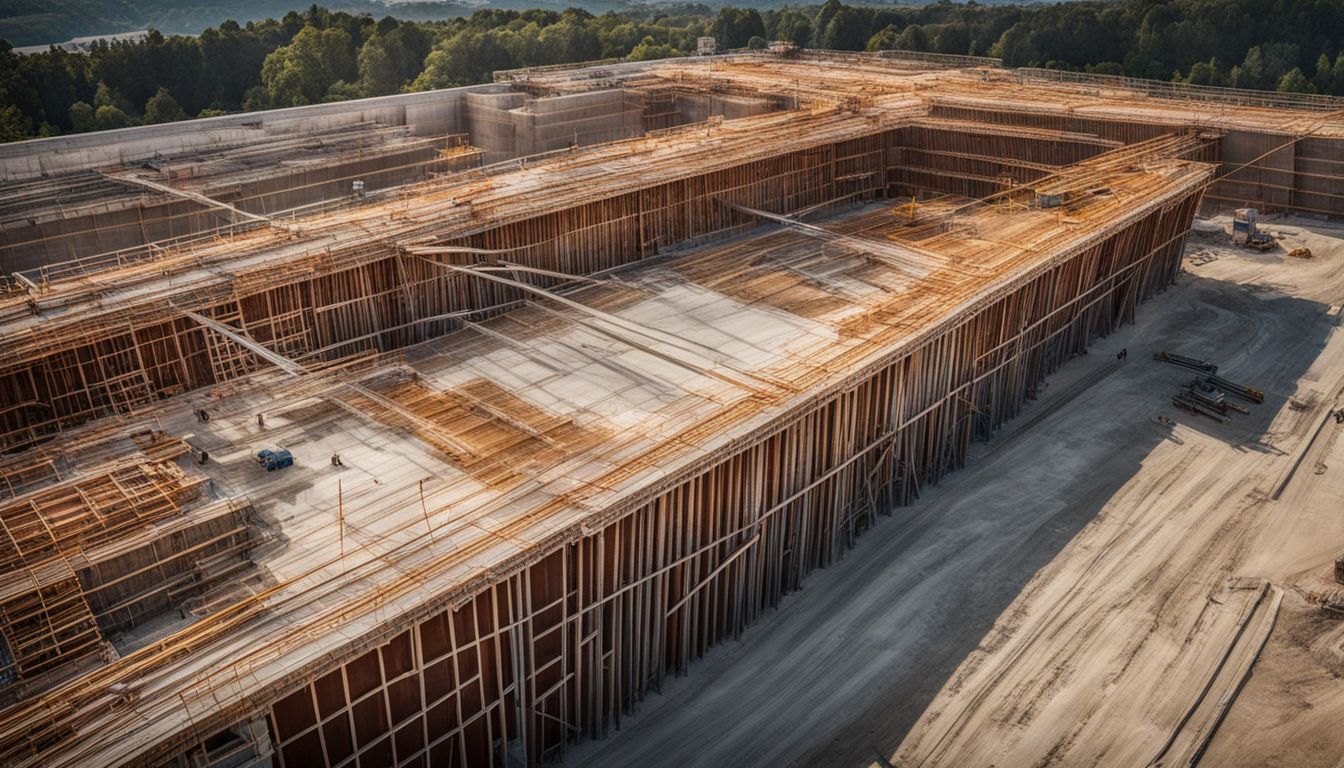
We often discuss the critical role of formwork in concrete construction for its primary job: shaping and supporting wet concrete until it hardens. Yet, many overlook its dual function that plays a significant part in the overall quality and durability of a construction project.
This overlooked aspect involves using formwork not just as a mould but also as an instrument for quality assurance, ensuring smooth surfaces and consistent shapes across all structures.
Our approach to mastering concrete formwork integrates this dual perspective into every project we undertake. We recognise that effective formwork engineering goes beyond creating temporary structures; it’s about controlling shape and dimensions with precision, guaranteeing structural integrity from design to reality.
This attention to detail does not only meet the needs of today’s ambitious designs but also lays down the foundation for sustainable infrastructure that withstands the test of time without compromising on aesthetics or functionality.
Different Types of Formwork
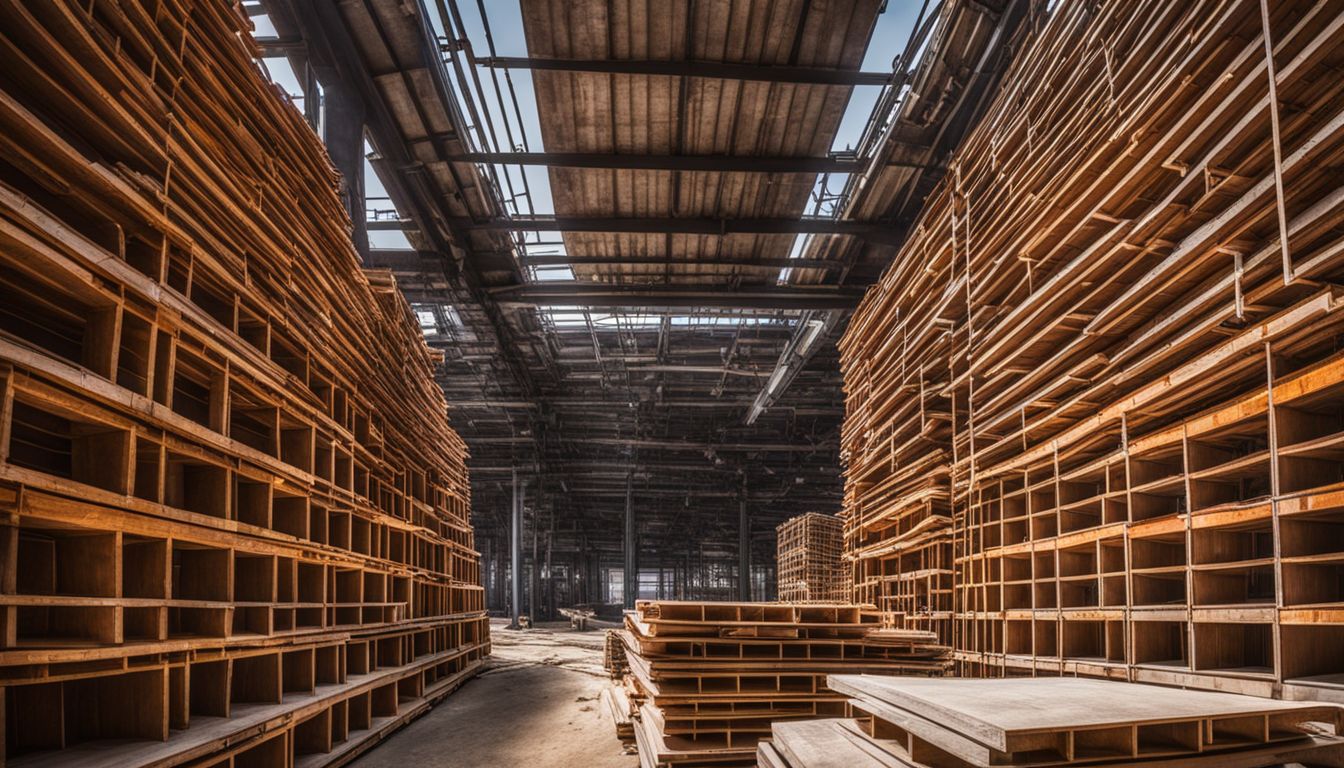
There are various types of formwork used in concrete construction, such as steel, wooden, plastic, and modular. Each type offers distinct advantages and is chosen based on specific project requirements.
Steel Formwork
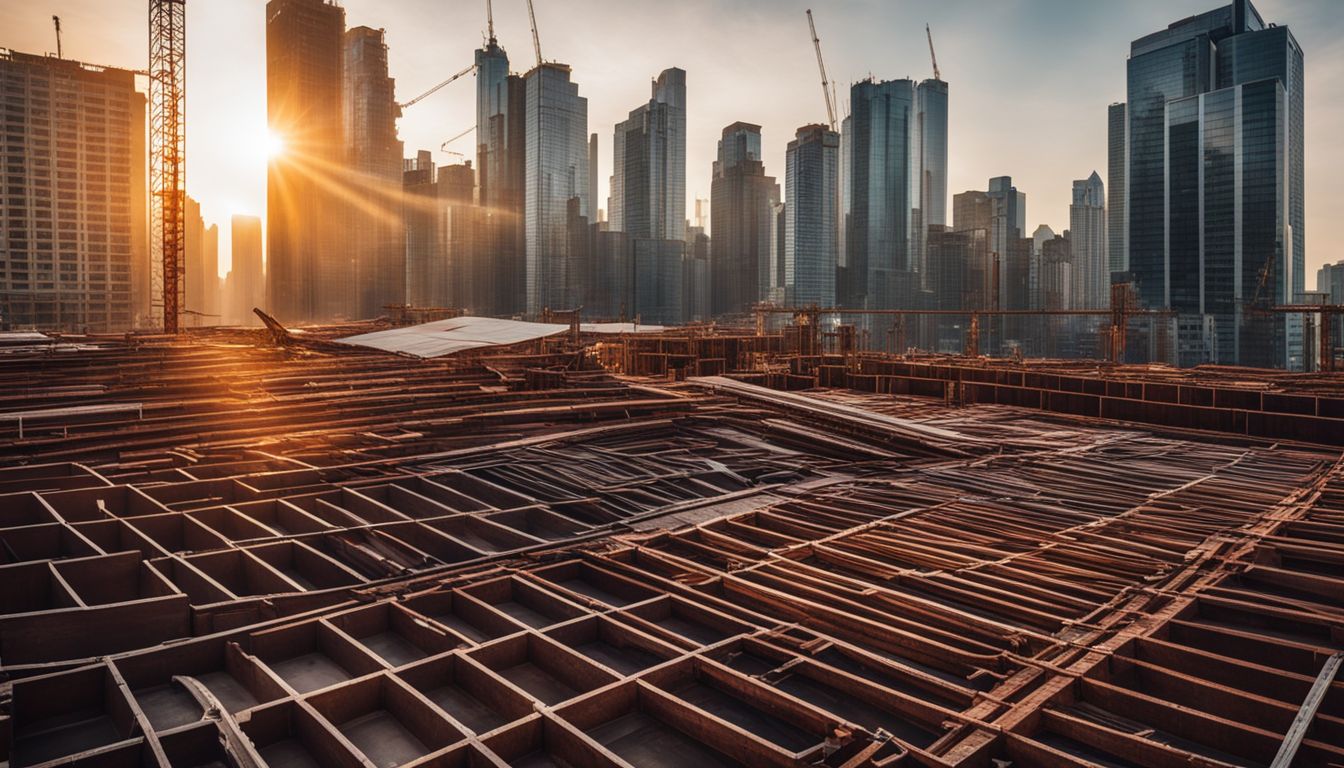
Steel formwork stands as a cornerstone in modern construction, offering unmatched durability and strength. Its use allows us to create structures that not only meet but exceed the rigorous demands of today’s building standards.
By opting for steel formwork, we embrace a system capable of being reused multiple times, which significantly cuts down on waste and promotes sustainability in concrete construction.
Innovation in steel formwork technology drives efficiency and quality in contemporary building projects.
We meticulously select high-grade steel to craft formworks that ensure precision and consistency across every pour. This choice empowers us to tackle even the most challenging architectural designs with confidence.
As business owners, adopting steel formwork translates into more streamlined operations and enhanced control over project timelines, enabling us to deliver on our promises with reliability and excellence.
Wooden Formwork
Wooden formwork plays a pivotal role in concrete construction, providing a temporary mould for wet concrete to shape and harden. We leverage high-quality timber that not only offers excellent support but also adapts easily to various shapes and sizes, making it ideal for complex structures.
The versatility of wooden formwork makes it a go-to choice for many projects, combining strength with ease of cutting and fixing onsite.
Our approach utilises the natural properties of wood, incorporating sustainability into our construction methods. Wood’s ability to be reused and recycled aligns with our commitment to sustainable practices in the industry.
With careful planning and design, we ensure that wooden formwork contributes significantly to both the efficiency of our projects and the minimisation of environmental impact.
Plastic Formwork
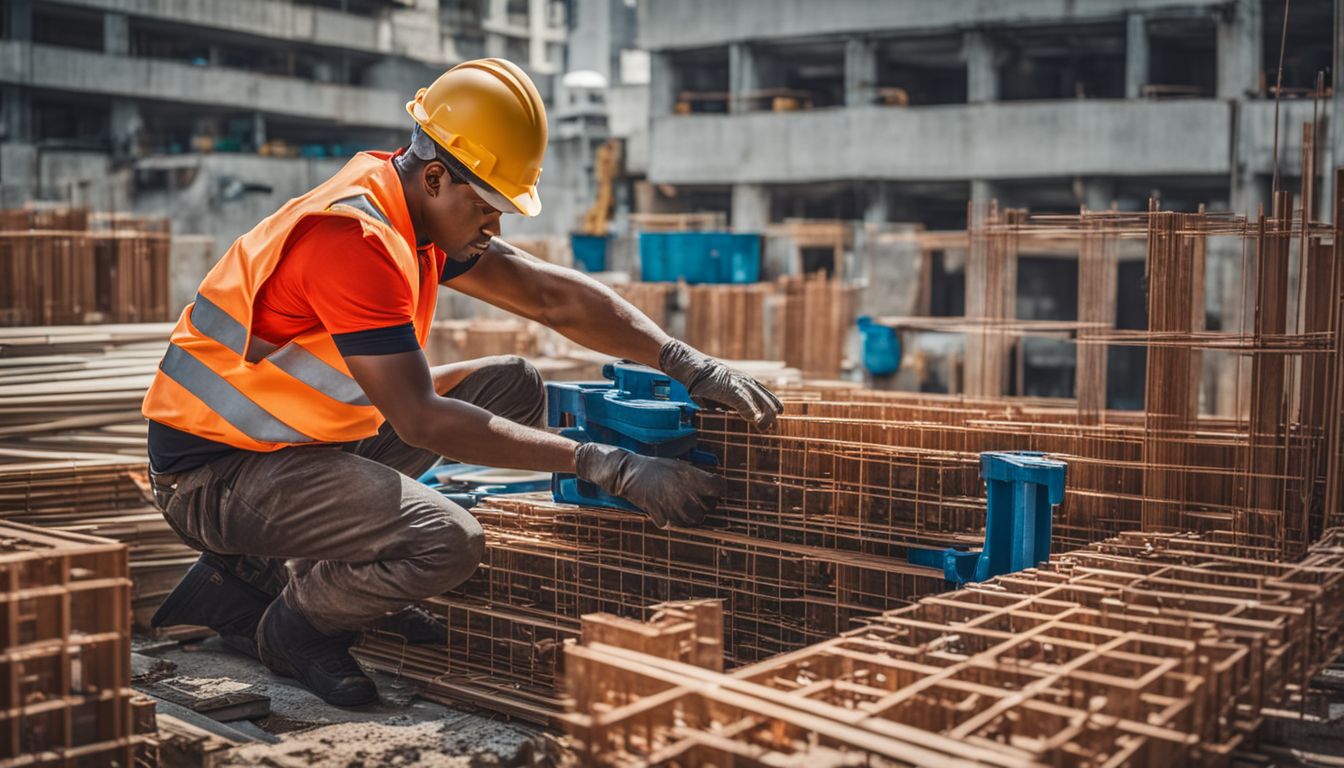
Plastic formwork has emerged as a lightweight yet strong alternative to traditional materials used in concrete construction. We find it extremely useful for simple and complex shapes alike, making it ideal for creating efficient, sustainable formwork in concrete projects.
Its versatility allows us to mould and construct intricate designs that were once challenging with steel or wooden formwork.
We appreciate plastic formwork’s ease of handling and cost-effectiveness. It stands out for its ability to be reused multiple times without losing integrity, reducing the overall material costs and environmental impact associated with concrete construction.
This innovation supports our commitment to delivering high-quality, eco-friendly building solutions while maintaining control over shape and dimensions in concrete work.
Modular Formwork
Modular formwork has become a game-changer in the realm of concrete construction, offering unparalleled flexibility and efficiency. We leverage this system to quickly adapt to various project sizes and complexities without compromising on quality or safety.
Its components can be reused across multiple projects, making it a cost-effective solution for business owners looking to minimise waste and maximise return on investment.
This type of formwork supports sustainable construction practices by reducing material wastage and enhancing work site management. We ensure that our modular systems meet the highest standards of durability and strength, aiding in the rapid progress of construction projects while maintaining strict control over shape and dimensions.
By streamlining these processes, we help business owners stay ahead in a highly competitive market.
Moving forward, let’s explore the engineering considerations necessary for effective formwork design and usage.
Engineering Considerations in Formwork Design and Use

Ensuring stability and strength, determining striking times, selecting cost-efficient materials, and considering safety are crucial in formwork design. Read on to explore the complexities of engineering considerations in formwork design.
Stability and Strength
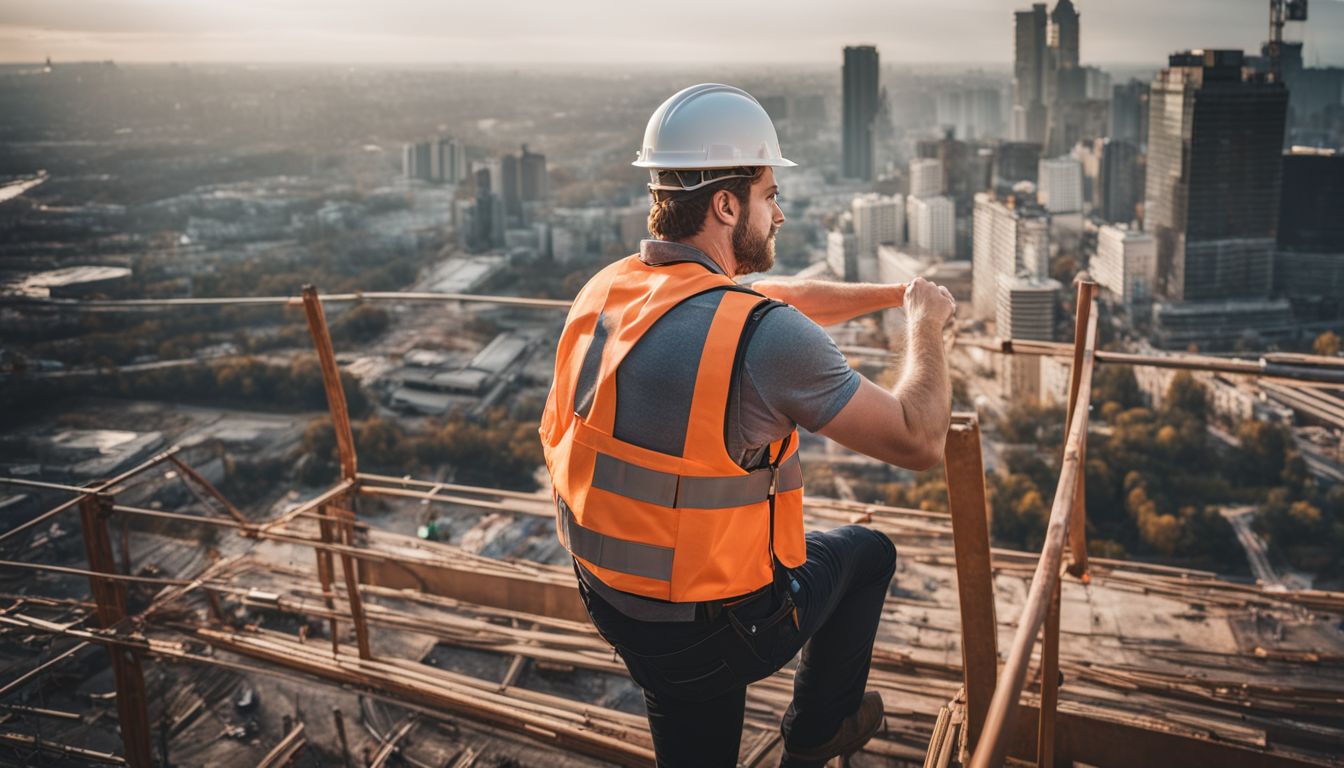
We take pride in understanding the critical importance of stability and strength in concrete formwork engineering. These two factors are the backbone of any construction project, ensuring that buildings stand firm against nature’s challenges.
Our approach incorporates rigorous testing and quality materials to maintain high standards in every structure we help bring to life. This dedication not only secures the integrity of constructions but also boosts confidence among business owners about the resilience of their investments.
Our team emphasises these aspects from the design phase to reality, focusing on structural design that withstands various stresses during and after construction. By mastering concrete formwork, we control shape and dimensions while laying a solid foundation for projects ranging from simple buildings to complex infrastructure.
We commit ourselves to excellence in this field, guaranteeing that our work supports sustainable formwork for concrete with an unwavering focus on stability and strength.
Striking Times
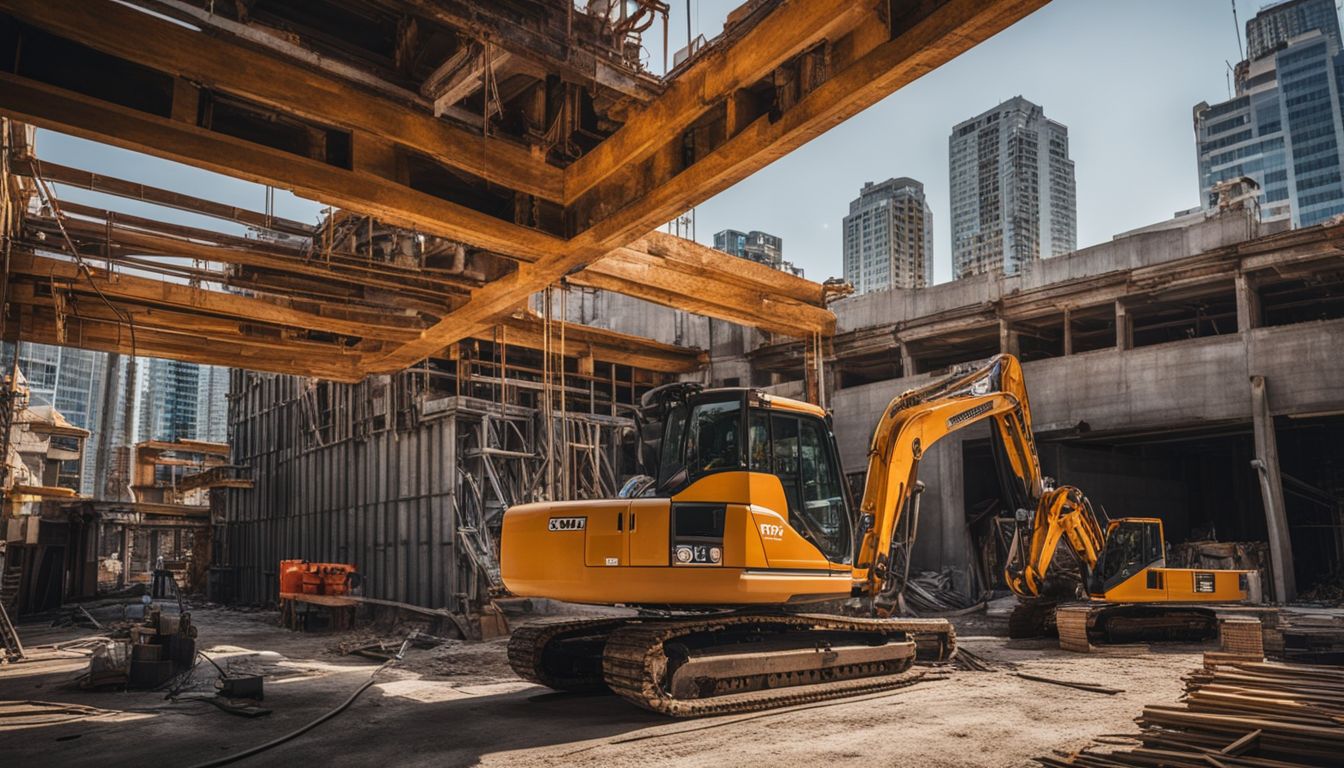
Striking times refer to the critical moment when formwork is removed from the concrete structure after pouring. This timing is crucial to ensure that the concrete has gained enough strength and rigidity to hold its shape without any support.
The duration varies based on several factors, such as ambient temperature, concrete mix design, and structural requirements. Striking too early can compromise the integrity of the structure, while delaying it unnecessarily impacts project timelines.
The striking time must be carefully calculated to guarantee the structural stability of the concrete.
Material Choice
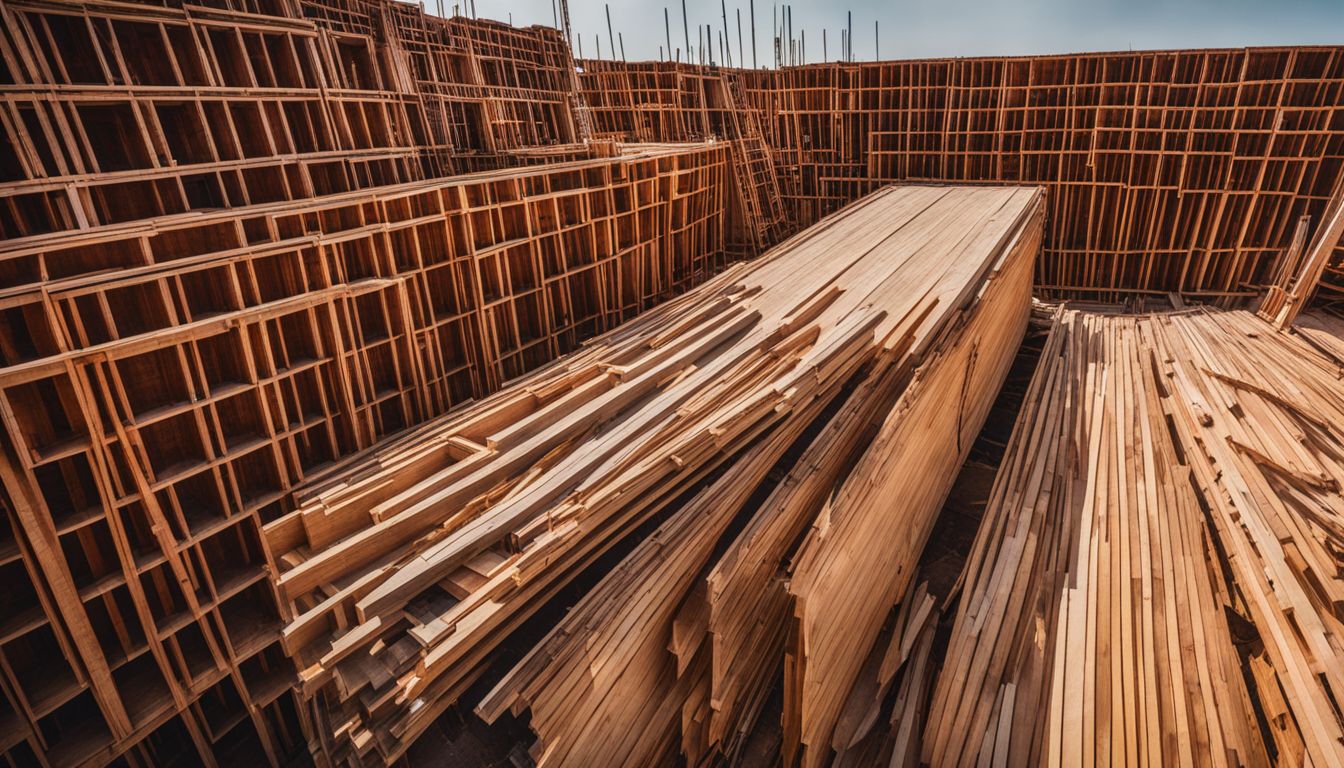
When selecting the material for formwork, we consider factors like strength, durability, and cost-effectiveness. Steel formwork offers high strength and reusability, making it suitable for repetitive use in large-scale projects.
On the other hand, wooden formwork is preferred for its versatility and ease of customisation to fit complex shapes. Plastic formwork is lightweight and easy to handle while providing good surface finish on concrete.
Modular formwork systems provide a balance between strength and flexibility, enabling rapid construction with minimal labour.
Cost Efficiency
Moving from material choice to cost efficiency, it’s crucial to consider how our formwork decisions affect the overall project budget. Selecting the most cost-efficient formwork system can significantly impact construction expenses.
By analysing and selecting formwork that optimises material usage and labour costs, we aim to achieve economical benefits without compromising on quality or safety standards. Calculating the total project expenditure requires a comprehensive understanding of not only materials but also associated logistics and installation requirements.
Strategically navigating these considerations can lead to substantial savings during a project’s lifecycle, ensuring efficient resource allocation while advancing sustainability targets in concrete construction contexts.
The Design Process of Formwork
In the design process of formwork, engineers calculate loads, determine formwork dimensions, and select appropriate materials. They also consider safety factors to ensure a reliable and secure structure for efficient concrete construction.
Calculating Loads
Calculating loads is a crucial step in formwork design, ensuring the support system can withstand the weight and pressure exerted by the concrete and any other construction materials.
It involves determining the maximum expected load on the formwork, including the weight of wet concrete, equipment, workers, and any additional live loads. Calculations must account for factors such as safety margins, impact forces from pouring concrete, and variations in material densities to ensure structural stability.
Utilising this information allows for selecting suitable formwork materials with adequate strength and rigidity to bear the anticipated loads without compromising safety or construction quality.
Determining Formwork Dimensions
Determining formwork dimensions involves analysing the structural design to calculate the required size and shape. It’s essential to consider factors such as load-bearing capacity, concrete placement method, and construction schedule when selecting the appropriate dimensions for the formwork.
By meticulously evaluating these aspects, we ensure that the formwork will effectively support the concrete during placement and curing stages.
The process also involves assessing the geometry realisation requirements of the project to determine how best to control shape and dimensions in concrete construction. This step is crucial in achieving precision and accuracy in reinforcing retaining walls, foundations, or other structural elements.
Selecting Appropriate Material
After determining the formwork dimensions, selecting appropriate material is crucial for ensuring the success of a concrete construction project. The right material choice underpins the structural integrity and efficiency of the formwork system.
It is not only essential to choose materials that guarantee stability and strength but also align with cost-efficiency and safety considerations. Our suite of modern formwork systems offers a range of materials, from steel and wood to plastic and modular options, meticulously designed to enhance construction processes with increased speed, improved quality control, enhanced safety measures, and sustainable practices.
In addition to considering load calculations and budget constraints when choosing suitable materials for formwork construction, it is advisable to focus on tailoring solutions towards economical and sustainable infrastructure development.
Safety Considerations
When planning and implementing formwork for concrete construction, safety considerations are paramount to ensure the well-being of workers and the success of the project. Prioritising safe working conditions requires diligent inspection of all formwork components, including bracings, shoring, and scaffolding to identify any potential hazards or defects.
Regular maintenance and testing of equipment are essential in upholding safety standards. Additionally, ensuring that adequate fall protection measures are in place significantly reduces the risk of accidents on site.
Moreover, providing thorough training for all personnel involved with formwork is crucial in mitigating hazards associated with handling heavy materials and operating machinery. This involves educating workers about proper lifting techniques, hazard identification, emergency procedures, and adherence to established safety regulations.
The Role of Formwork in Concrete Construction
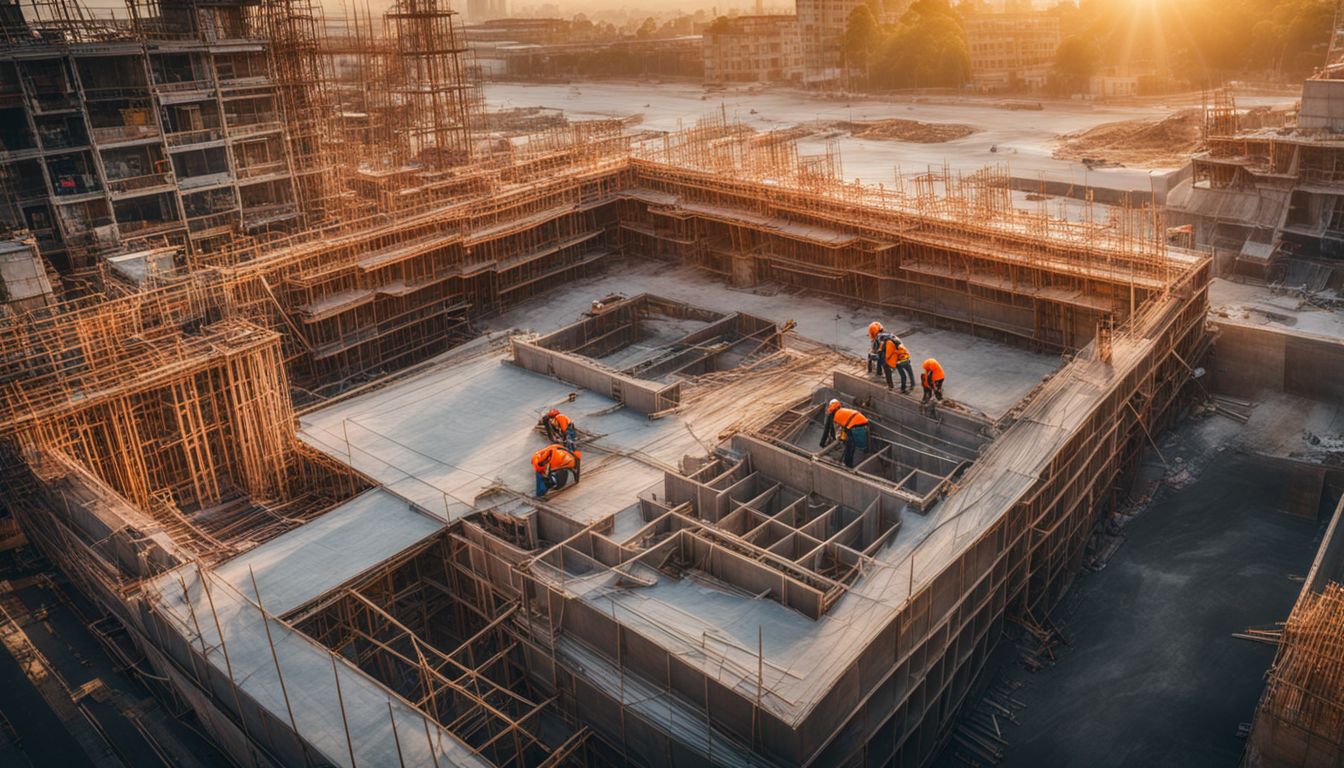
Formwork plays a crucial role in concrete construction by shaping the structure, enabling strength development, and supporting the concrete until it can stand independently. It facilitates the geometry realisation of complex forms and ensures proper concrete curing, contributing to the efficient progression of construction projects.
Geometry Realisation and Strength Development
To ensure the accurate realisation of complex geometries in concrete construction, meticulous planning and precision in formwork are essential. Calculating loads and selecting appropriate materials contribute to achieving the desired shapes while maintaining structural integrity.
Safety considerations underpin every decision, ensuring that the strength development of the concrete is supported throughout the construction process.
The effective management of geometry realisation and strength development holds the foundation for successful outcomes in concrete construction, where thorough engineering choices mould shapes with resilience.
Ensuring Concrete Curing
To ensure concrete curing, we carefully control the moisture content and temperature of the concrete during its initial setting period. This process is critical for achieving optimal strength and durability.
By maintaining proper curing conditions, we allow the hydration process to occur smoothly, enabling the concrete to reach its full potential in terms of strength development. Additionally, this proactive approach reduces the risk of cracking and ensures that our concrete structures can withstand various external forces over time.
Looking ahead: Advantages of Modern Formwork Systems
Facilitating Construction Process
Formwork is an essential facilitator in the construction process, providing the necessary framework for pouring and shaping concrete. It aids in creating complex shapes and dimensions, retaining walls, foundations, and other structural elements with precision.
By utilising formwork systems tailored to specific project needs, we ensure efficient and accurate construction with control over shape and dimensions.
Modern formwork systems not only streamline the construction process but also enhance quality assurance by providing support during concrete curing while maintaining safety standards.
Through strategic use of formwork engineering principles, business owners can expect economical and sustainable construction processes that minimise material waste and improve overall project efficiency.
Advantages of Modern Formwork Systems
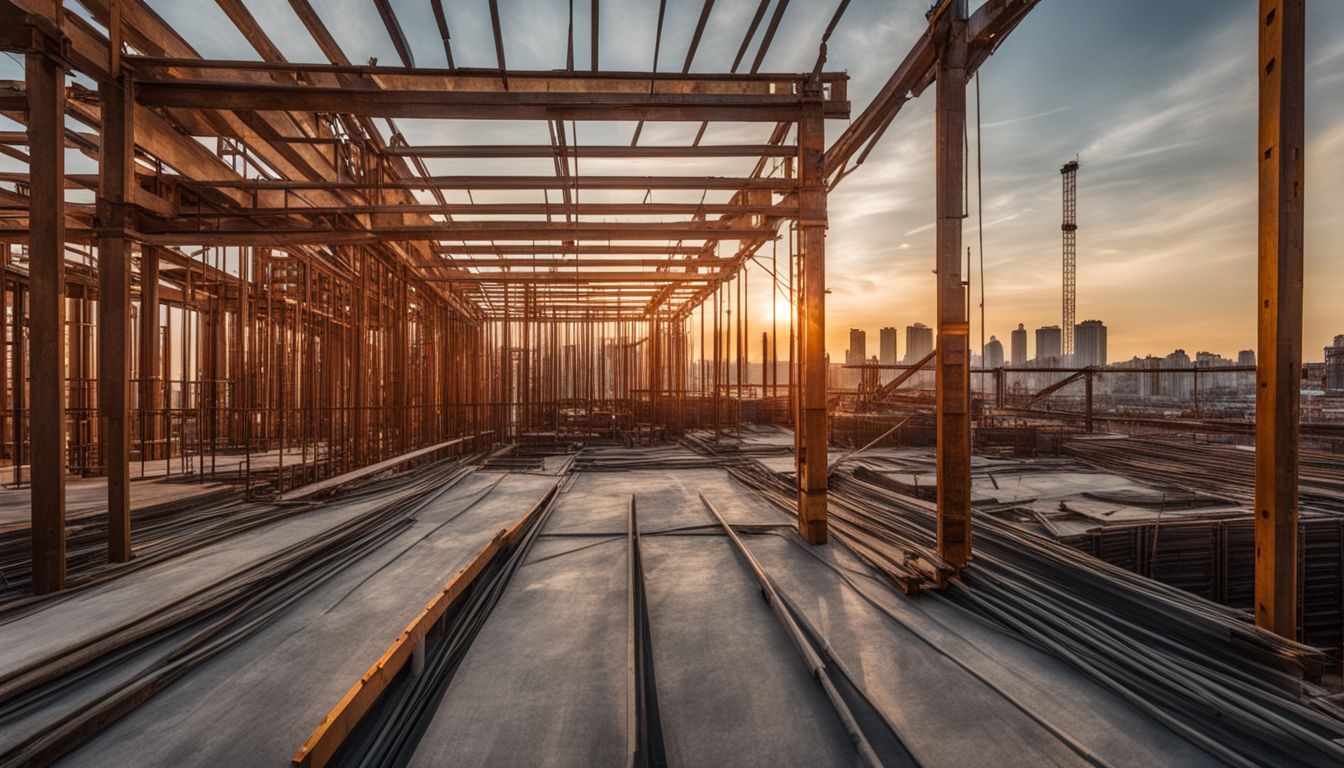
Modern formwork systems offer increased speed of construction, improved quality control, enhanced safety measures, and economical and sustainable construction. The systems are designed to enhance the efficiency of concrete construction processes while ensuring robust structural integrity.
Increased Speed of Construction
Utilising modern formwork systems can significantly increase the speed of construction. These innovative systems, such as modular and plastic formwork, streamline the construction process by allowing for quick assembly and disassembly.
With reduced time spent on formwork installation, more attention can be directed towards other critical aspects of the project, ultimately expediting overall construction timelines without compromising quality.
The implementation of efficient formwork design and material selection also plays a pivotal role in accelerating construction. By leveraging advanced engineering considerations and embracing sustainable formwork solutions, businesses can achieve faster project completion while maintaining structural integrity and adhering to safety standards.
Improved Quality Control
In modern formwork systems, quality control is enhanced through streamlined processes and advanced materials. Active reinforcement helps maintain dimensional accuracy. Material choice supports structural integrity in concrete elements, aligning with the project specifications and design requirements.
Increased speed of construction ensures ongoing adherence to these standards, enhancing productivity without compromising quality control.
The use of innovative technologies like digital fabrication contributes to the accurate replication of design specifications in concrete formwork. This precision further underpins the importance of quality control in ensuring that fabricated structures meet engineering standards and design expectations.
Digital tools provide real-time insights into material properties and structural performance, enabling proactive adjustments for optimal results.
Enhanced Safety Measures
Transitioning from improved quality control to enhanced safety measures, we understand the paramount importance of ensuring a safe working environment in concrete construction projects.
Implementing modern formwork systems not only enhances efficiency but also plays a crucial role in mitigating potential hazards on construction sites. Employing advanced safety features such as fall protection, guardrails, and non-slip surfaces significantly reduces the risks associated with working at height or around heavy concrete structures.
When it comes to ensuring safety, clear communication and training are essential components. Educating all personnel about proper equipment usage, potential hazards, and emergency procedures creates a culture of vigilance and responsibility.
Economical and Sustainable Construction
Economical and sustainable construction is essential for maximising cost-efficiency while minimising environmental impact. By utilising modern formwork systems, businesses can significantly reduce material wastage and labour costs.
These systems are designed to enhance speed and efficiency in construction processes, thereby contributing to overall cost savings. Additionally, the use of sustainable materials in formwork not only helps businesses meet environmental standards but also ensures long-term resilience of structures, underpinning a commitment to sustainability.
The incorporation of advanced formwork technology into concrete construction provides an opportunity for businesses to streamline their operations, delivering both economic and ecological benefits.
Efficient Formwork Construction: Maitland’s Approach
Maitland’s approach for efficient formwork construction prioritises precision and speed. By utilising cutting-edge digital fabrication techniques, Maitland’s team customises formwork to exact specifications with minimal material waste.
Automated assembly processes further streamline the construction timeline, accelerating project completion without compromising quality or safety. This innovative approach not only maximises cost-effectiveness but also ensures unmatched accuracy in geometric realisation and strength development.
Maitland’s method expertly combines bespoke formwork design with meticulous attention to detail, addressing even the most intricate engineering challenges. The result is a tailored formwork solution that underpins sustainable concrete construction practices – ensuring both economic efficiency and environmental responsibility throughout the project lifecycle.
The Future Trends in Formwork Technology
The Future Trends in Formwork Technology:
– Digital fabrication and automated assembly methods are revolutionising the formwork industry, streamlining construction processes while boosting precision and efficiency.
– Customised concrete fabrication is shaping the future of formwork technology, offering tailored solutions to meet evolving construction demands across various projects.
Digital Fabrication
Digital fabrication revolutionises the construction industry, offering precise and efficient methods for creating formwork components. Utilising advanced technologies such as 3D printing and CNC machining, digital fabrication enables the rapid production of custom formwork elements with exacting precision.
This approach not only accelerates the construction process but also enhances quality control by ensuring that formwork components are tailored to specific project requirements. As business owners, embracing digital fabrication can streamline operations and drive innovation in concrete construction, fostering sustainable and cost-effective solutions.
The integration of digital fabrication techniques empowers businesses to produce intricate formwork designs with unparalleled accuracy. By harnessing this technology, companies can optimise their processes for constructing temporary structures while upholding stringent quality standards.
Automated Assembly
In today’s fast-paced construction industry, automated assembly is revolutionising the formwork process. Modern technology has streamlined the assembly of formwork systems, allowing for faster and more efficient construction processes.
Automated assembly not only speeds up the overall construction timeline but also reduces labour costs significantly. With precise automation technologies in place, businesses can expect increased accuracy and consistency in their concrete formwork projects, leading to superior quality results.
Looking ahead, advancements in automated assembly are set to transform the way we approach concrete construction. As technology continues to evolve, embracing automated assembly will be crucial for businesses aiming to stay competitive and efficient in the ever-changing realm of construction.
Customised Concrete Fabrication
When we customise concrete fabrication, we ensure that the unique requirements of each project are met with precision. Our team carefully analyses the specific needs and designs tailored formwork solutions to enhance efficiency and quality.
By utilising advanced technology and innovative techniques, we can achieve intricately detailed forms and structures. This tailored approach not only meets but exceeds expectations, pushing the boundaries of what is achievable in concrete construction.
Moreover, our customised concrete fabrication empowers us to create complex architectural features and shapes with exceptional accuracy. The honed expertise in this domain enables us to navigate through intricate design challenges while ensuring structural integrity and aesthetic appeal for every project.
Case Studies
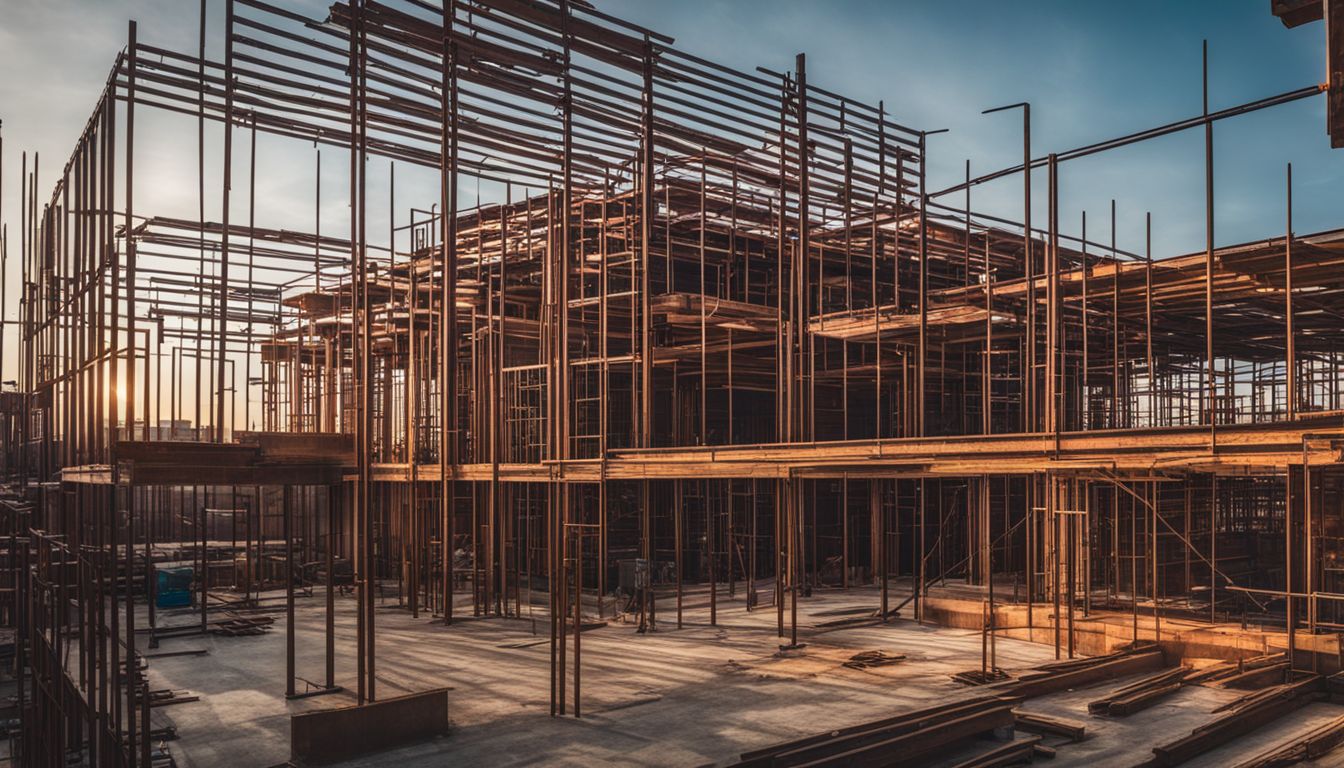
Explore real-world applications of modern formwork systems and innovative design solutions to gain valuable insights into successful construction projects – discover more.
Successful Application of Modern Formwork Systems
Modern formwork systems have revolutionised the construction industry, offering business owners significant advantages in terms of efficiency and quality. These advanced systems not only expedite the construction process but also ensure improved quality control throughout.
Enhanced safety measures are a key benefit, promoting a secure working environment for all involved. The economic and sustainable nature of these modern formwork systems makes them a wise investment for any concrete construction project, aligning with both financial and environmental objectives.
These innovative solutions streamline the overall construction process, providing an edge in today’s competitive market. Implementing modern formwork systems empowers businesses to meet project demands effectively while delivering high-quality results within time and budget constraints.
Innovative Formwork Design Solutions
Innovative formwork design solutions revolutionise the construction process, optimising efficiency and precision. Advanced 3D printing technology allows for bespoke formwork designs tailored to each project’s unique requirements.
Automation streamlines the fabrication process, ensuring meticulous quality control while reducing production time. Digital fabrication not only expedites construction but also underpins sustainable practices by minimising material waste and energy consumption.
Cutting-edge modular formwork systems facilitate swift assembly, significantly speeding up the construction timeline without compromising structural integrity. Steel-reinforced plastic formwork materials offer durability and reusability, enhancing cost-efficiency while promoting environmentally friendly practices in concrete construction.
Lessons Learned from Past Projects
We have gleaned valuable insights from previous projects, shedding light on the importance of meticulous planning and quality execution. These experiences underscore the significance of considering factors such as material choice, striking times, and safety measures in formwork design.
The lessons learned emphasise that a tailored approach towards formwork engineering underpins successful concrete construction, not only enhancing efficiency but also ensuring structural integrity and resilience.
By analysing past projects, we unearth essential strategies for overcoming complexities in concrete formwork. This proactive stance enables us to address challenges with confidence while harnessing innovative solutions for sustainable and robust construction practices.
Conclusion
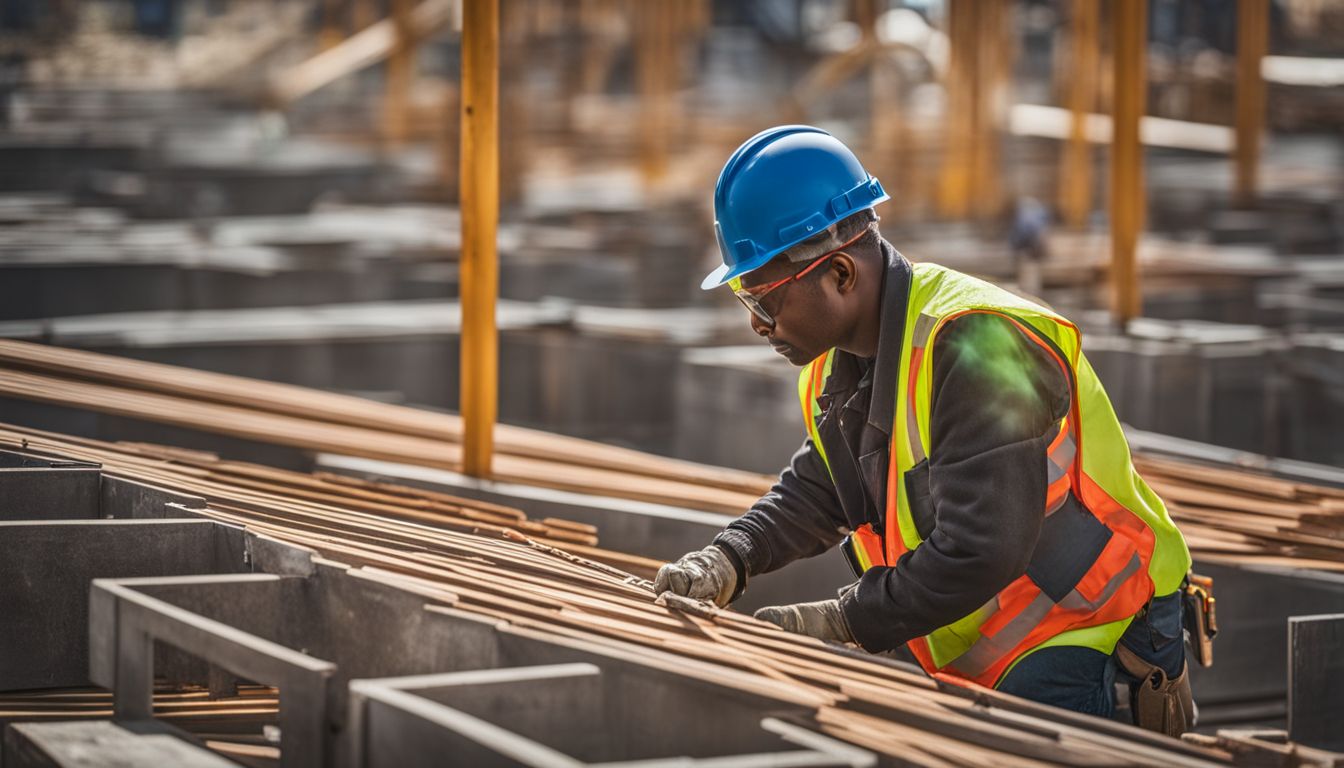
The critical role of formwork in concrete construction cannot be overstated. Formwork engineering ensures precise geometry realisation, strength development, and quality assurance.
With modern formwork systems, we can achieve speedy, safe, and sustainable concrete construction. As formwork technology continues to advance, it underpins the efficient and economical future of concrete construction.
Discover how Maitland’s unique strategy optimises formwork construction for enhanced efficiency and safety by exploring our in-depth guide on efficient formwork construction: Maitland’s Approach.

